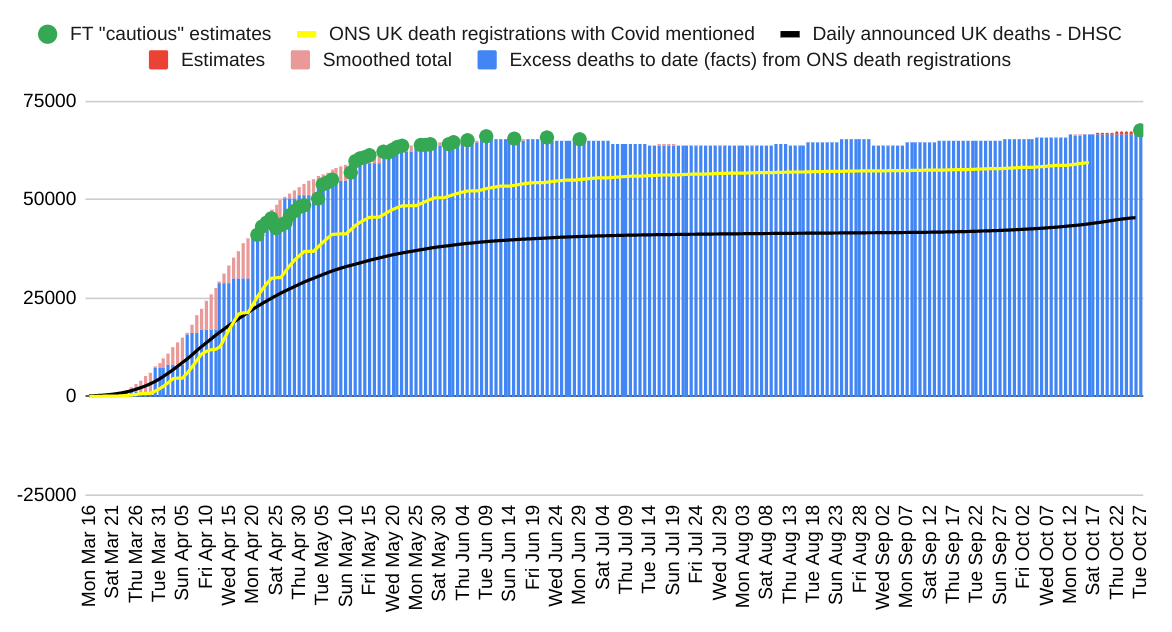
UPDATE: A cautious estimate of the number of excess UK deaths linked to coronavirus since mid march has passed a new marker and stands at
80,100
Of these 75,200 have happened and the rest are estimates bringing lagged official data up to date
1/
80,100
Of these 75,200 have happened and the rest are estimates bringing lagged official data up to date
1/

When measured properly, it is clear that the second wave has been far less deadly than the first.
My estimates suggest that excess deaths are now beginning to decline
2/
My estimates suggest that excess deaths are now beginning to decline
2/

Why should you believe these numbers?
a) Because the updating model is proving remarkably accurate in the second wave (I'm surprised how accurate)
b) This welcome feature stems from better Covid testing, so daily hospital deaths pick up roughly all excess deaths this time
3/
a) Because the updating model is proving remarkably accurate in the second wave (I'm surprised how accurate)
b) This welcome feature stems from better Covid testing, so daily hospital deaths pick up roughly all excess deaths this time
3/
FWIW - an extremely speculative* estimate of the R number based on my excess deaths series suggests it was hovering around 1 just before lockdown and persistently went below 1 after Nov 2nd start of lockdown
* Total back of the fag packet - don't take too seriously
ENDS
* Total back of the fag packet - don't take too seriously
ENDS
• • •
Missing some Tweet in this thread? You can try to
force a refresh










